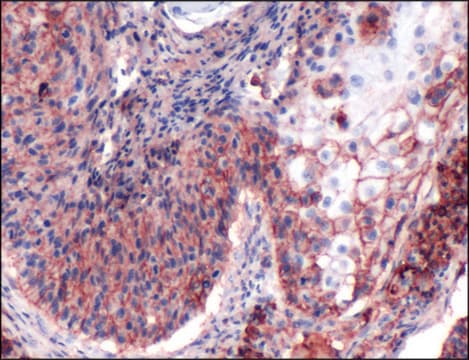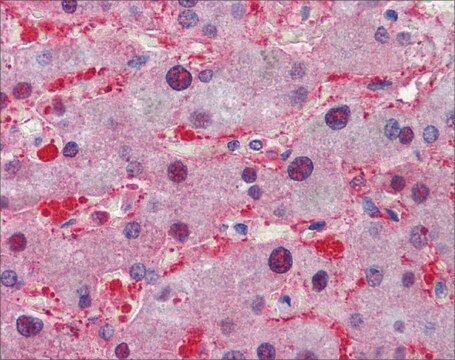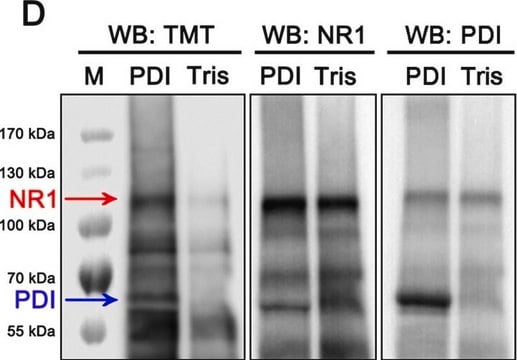MABT78
Anti-mouse CD44 (H-CAM) Antibody, clone KM201
clone KM201, from rat
Synonyme(s) :
CD44 antigen (homing function and Indian blood group system), CDw44 antigen, HCAM, H-CAM, HUTCH-1, Phagocytic glycoprotein I, Extracellular matrix receptor III, GP90 lymphocyte homing/adhesion receptor, Heparan sulfate proteoglycan, Hermes antigen, Hyalu
About This Item
Produits recommandés
Source biologique
rat
Niveau de qualité
Forme d'anticorps
purified antibody
Type de produit anticorps
primary antibodies
Clone
KM201, monoclonal
Espèces réactives
mouse
Technique(s)
flow cytometry: suitable
Isotype
IgG1κ
Numéro d'accès NCBI
Numéro d'accès UniProt
Conditions d'expédition
wet ice
Modification post-traductionnelle de la cible
unmodified
Informations sur le gène
human ... CD44(960)
Catégories apparentées
Description générale
Spécificité
Immunogène
Application
Cell Structure
Stem Cell Research
Adhesion (CAMs)
Hematopoietic Stem Cells
Qualité
Flow Cytometry Analysis: 0.1 µg of this antibody detected CD44 in mouse bone marrow cells.
Description de la cible
Liaison
Forme physique
Stockage et stabilité
Remarque sur l'analyse
Mouse bone marrow cells
Autres remarques
Clause de non-responsabilité
Not finding the right product?
Try our Outil de sélection de produits.
Code de la classe de stockage
12 - Non Combustible Liquids
Classe de danger pour l'eau (WGK)
WGK 1
Point d'éclair (°F)
Not applicable
Point d'éclair (°C)
Not applicable
Certificats d'analyse (COA)
Recherchez un Certificats d'analyse (COA) en saisissant le numéro de lot du produit. Les numéros de lot figurent sur l'étiquette du produit après les mots "Lot" ou "Batch".
Déjà en possession de ce produit ?
Retrouvez la documentation relative aux produits que vous avez récemment achetés dans la Bibliothèque de documents.
Notre équipe de scientifiques dispose d'une expérience dans tous les secteurs de la recherche, notamment en sciences de la vie, science des matériaux, synthèse chimique, chromatographie, analyse et dans de nombreux autres domaines..
Contacter notre Service technique







